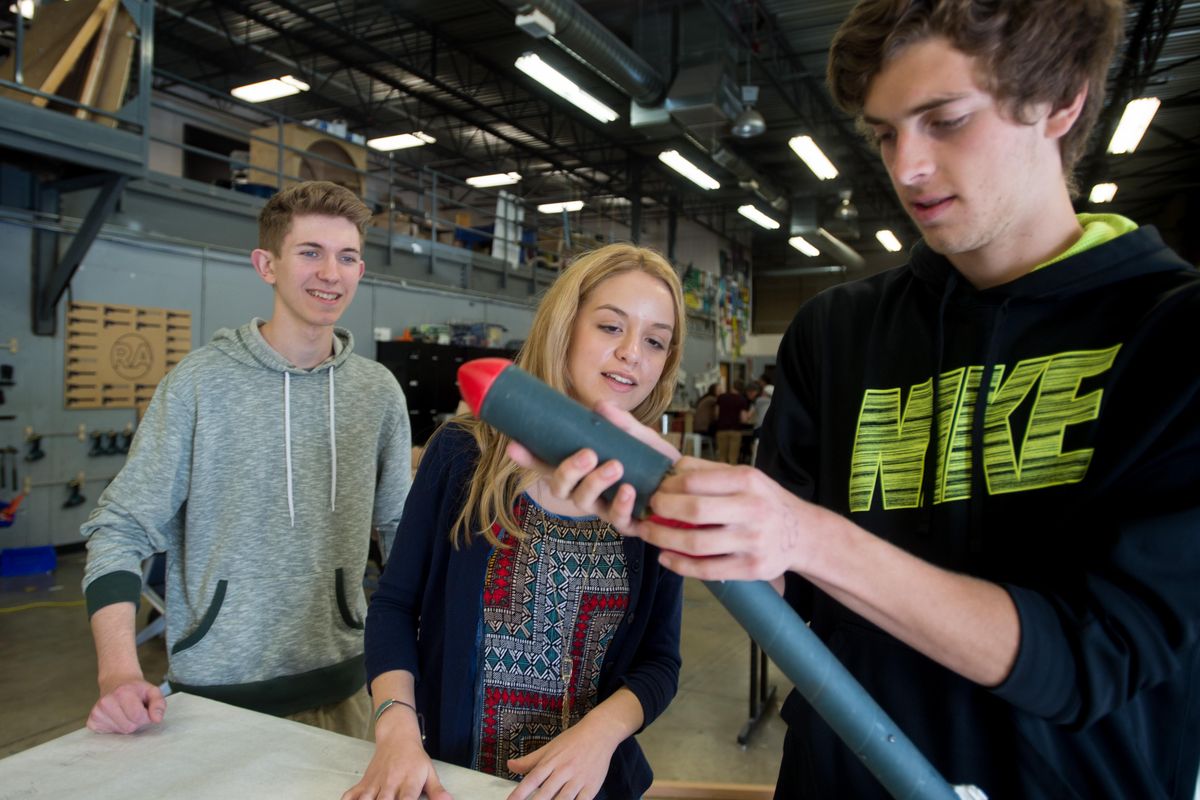Riverpoint Academy students in Mead qualify for national rocket competition

Three students from Mead’s Riverpoint Academy are having a blast applying their classroom skills to a small powerful rocket.
The students have won a spot in the national Team America Rocket Challenge in Washington, D.C., this month.
They have designed a rocket that flies true and high, reaching an altitude of 775 feet or so.
More than 800 teams competed nationally, but only 100 qualified for the finals.
The Mead team is the only qualifier east of the Cascades in Washington, said their teacher, Rick Biggerstaff.
The students had to design their small rocket and then make adjustments to it so that it will fly to competition standards.
The goal is to lift the rocket to 775 feet and keep it aloft for 41 to 43 seconds.
A parachute and casing holding a raw egg are ejected to float back to the ground. The egg cannot break.
“Safety is always first whatever we do,” Biggerstaff said.
Team member Kyle Graves, a junior, said, “We all have to stand back and keep our distances.”
Graves is joined by Kaleb Cerar, a sophomore, and Bella Memeo, a freshman.
They are part of a STEM-based curriculum that combines science, technology, engineering and mathematics with entrepreneurship.
The students said the key to success is eliminating human error.
“We’ve been out practicing all winter long,” Biggerstaff said.
He said rocketry is an exercise in problem solving.
Associate Professor Martin Weiser at Eastern Washington University has been a consultant and judge.
During three qualifying flights, the team had the raw egg payload break.
They fixed the problem with more padding and succeeded in their second and third trial flights to qualify for nationals.
“I can’t wait. I’ve never been to D.C.,” Graves said.
The students are going to tour the Smithsonian museums and attend a breakfast at the Capitol. The competition is set for May 13 in nearby Virginia.
The rocket is powered by a commercially available solid-fuel booster. They purchased 17 boosters for $200.
Once the booster, or rocket motor, finishes firing, it sets off a black powder charge that allows the payload to separate from the rocket housing, which falls back to ground. The housing and nose cone are reusable.
The nose cone and transition area to the rocket body are a three-dimensional computer design.
The fins and fin slots were laser cut for precision.
The key to the design is finding the right center of gravity and center of pressure from the rocket thrust.
“We tried to use as many computer-automated tools as we could,” Graves said.
His dream is to become an aerospace engineer.
Cerar wants to go into graphic design or engineering.
Memeo hopes to be an Air Force pilot or a graphic designer.
To offset the cost of the travel and competition, the team is raising $6,500 in sponsorships. To donate, go to https://wa-mead-donate.intouchreceipting.com.
Fiscal responsibility is another of the integrated lessons for the students, Biggerstaff said.
The winner of the competition gets $25,000 and qualifies for international competition.